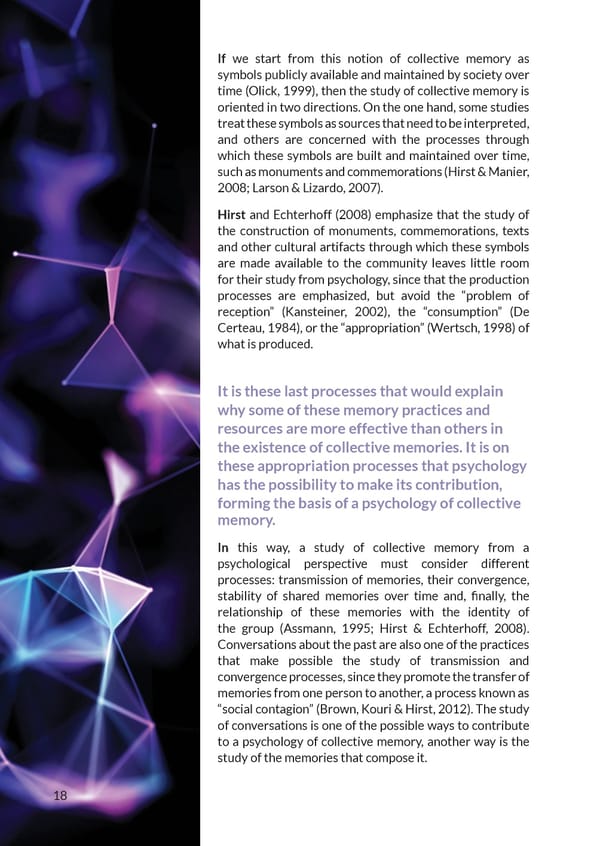If we start from this notion of collective memory as symbols publicly available and maintained by society over time (Olick, 1999), then the study of collective memory is oriented in two directions. On the one hand, some studies treat these symbols as sources that need to be interpreted, and others are concerned with the processes through which these symbols are built and maintained over time, such as monuments and commemorations (Hirst & Manier, 2008; Larson & Lizardo, 2007). Hirst and Echterhoff (2008) emphasize that the study of the construction of monuments, commemorations, texts and other cultural artifacts through which these symbols are made available to the community leaves little room for their study from psychology, since that the production processes are emphasized, but avoid the “problem of reception” (Kansteiner, 2002), the “consumption” (De Certeau, 1984), or the “appropriation” (Wertsch, 1998) of what is produced. It is these last processes that would explain why some of these memory practices and resources are more effective than others in the existence of collective memories. It is on these appropriation processes that psychology has the possibility to make its contribution, forming the basis of a psychology of collective memory. In this way, a study of collective memory from a psychological perspective must consider different processes: transmission of memories, their convergence, stability of shared memories over time and, finally, the relationship of these memories with the identity of the group (Assmann, 1995; Hirst & Echterhoff, 2008). Conversations about the past are also one of the practices that make possible the study of transmission and convergence processes, since they promote the transfer of memories from one person to another, a process known as “social contagion” (Brown, Kouri & Hirst, 2012). The study of conversations is one of the possible ways to contribute to a psychology of collective memory, another way is the study of the memories that compose it. 18
 MemoryHandbook new Page 17 Page 19
MemoryHandbook new Page 17 Page 19